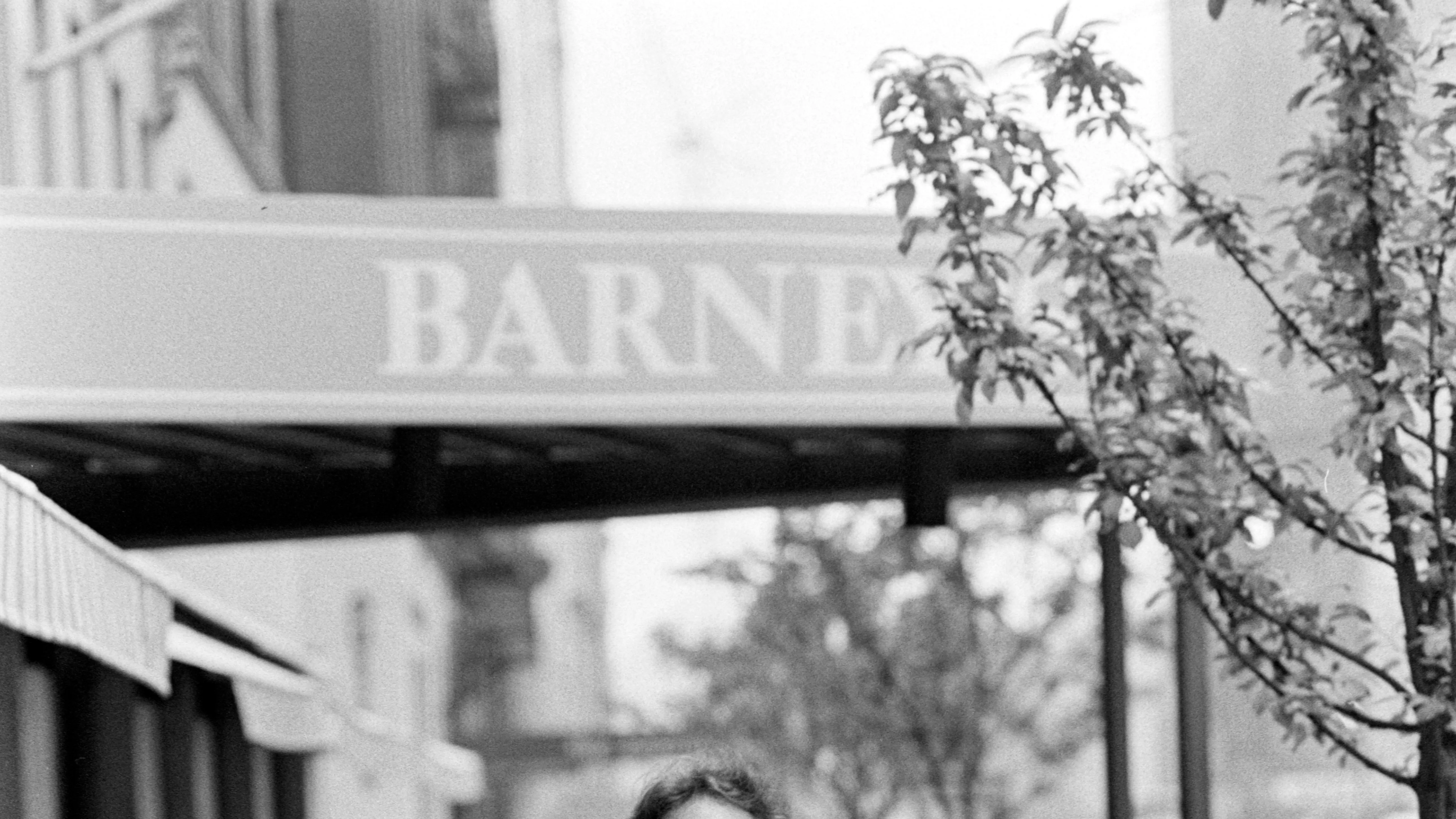By Tyler Watamanuk
Copyright gq

Gene Pressman still loves clothes. During our interview, the 74-year-old former Barneys New York CEO couldn’t help but show off the handsome leather belt he was wearing. Decades old, from Barneys’ in-house collection, it has stood the test of time, remaining as sturdy and stylish as ever. His eyes practically sparkle when he talks about his cherished Bass Weejuns loafers or the vintage Brooks Brothers T-shirts he’s been wearing since he was a much younger man.
“The best T-shirt on the planet, and I still wear ‘em to this day,” he says.
Gene’s grandfather is Barney Pressman, the man who founded the original Barneys all the way back in 1923. With Gene’s new memoir, They All Came to Barneys, the younger (and perhaps flashiest) Pressman reflects on the department store’s meandering history—the highs, the lows, and the extravagant fashions at the center of it all. When you think of Barneys now, you might picture a symbol of New York cool, but the store began as a discount suit shop before it was given the glow-up of a lifetime by Gene and his father, Fred. Together, they transformed Barneys into a fashion empire, introducing American shoppers to icons like Armani, Comme des Garçons, and Dries Van Noten.
They All Came to Barneys is a thrilling ride through an era of retail glamour and a version of New York City that’s long gone—and likely never coming back. “A lot of things have been written about Barneys,” Pressman says. “I wanted to straighten out the record a little bit.” This is no average business memoir, however. The book has it all: sex and drugs at Studio 54, Versace leather pants, cameos from New York mavens like Anna Wintour and Andy Warhol (the latter who Pressman calls “famously cheap”), and Helmut Lang denim. It’s both a personal memoir of a stylish, well-heeled life and a cultural love letter to a beloved Big Apple institution.
GQ caught up with Gene to discuss the legacy of his family’s store, his passion for classic American menswear, and the iconic black shopping bag that still holds a special place in his heart.
GQ: Ralph Lauren once praised your father’s personal style. What do you remember about how your father dressed, and what did you admire about it?
Gene Pressman: He had extraordinary taste. Paradoxically, he was colorblind, which nobody knew. He had trouble seeing browns and blues or browns and reds. He knew exactly what he was doing, but he looked like he had fallen out of bed. Everything was put together, but not perfect. It wasn’t contrived. He wasn’t a monogram kind of guy. For his handkerchief, he would casually make the points and just sort of stuff it in [his suit pocket.] A lot of guys, when they fall in love with a certain shirt, they’ll wear it until it falls off. So a lot of his shirts were frayed. He never wanted to throw it out.
It was cool because he would sometimes wear suit jackets with gray formal pants. He broke certain rules, but it always worked. He wore a fedora that had a hole in the brim because he didn’t care. He wore a raincoat over his shoulders. He never really put it on; he just draped it over his arms. But he had the most unbelievable eye for quality and he understood the make [of a garment.]
When he designed the line with Giorgio [Armani] in the beginning, they worked together in terms of fabric and certain fit because the American male was obviously way behind their European counterparts. He was afraid that Armani’s fashions were going to be too avant-garde for guys to wear to work. The rules were very different back then. The line they designed together was really a mindblower for a lot of guys. And of course, the creative types are the ones who bought it first. I still wear my dad’s stuff 40 years later, and the styling is perfect.
How did you go about finding your own sense of style?
I have always dressed like this. [Gestures to his outfit.] Tight jeans, a T-shirt, or a button-down shirt from Brooks Brothers or from Barneys. I’d wear a blazer, and I’d wear Bass Weejun penny loafers. I don’t want to be conscious of clothes, and I don’t want clothes to wear me. And quite frankly, I never liked fashion. I liked it for other people, but not for me.
When [designer] fashion was introduced to men, I did experiment. I went for more avant-garde stuff but I didn’t feel comfortable in it. A lot of guys liked it but it wasn’t for me. I’m very classic in that way. The irony of Barneys is everyone thought it was so trendy or whatever. But the fact is Barneys wasn’t trendy at all. Some of the clothes [would] trend, but the store’s sensibility was like 10% had a twist to it and then the rest was very wearable and timeless.
It’s all about finding [your] individual style. It could mean wearing a great tweed jacket in a slouchy, kind of attitude way with a cool knit tie or something. You know, Ralph said to me, “Individual style is everything.” When I used to see people dress head to toe [in one brand], I would go crazy. I hated it. That’s not what it’s about. The designers wanted to dress like that because they wanted to sell more things. Customers came to Barneys to see what’s new and try things. When people used to talk about focus groups and “we’re going to give the customer what they want,” I would laugh. Because my credo was never give the customer what they want because they don’t know what they want! Now, every store looks the same. A lot of stores look to me like airport stores.
The book features these great behind-the-scenes asides about all these fashion designers. I loved the one about Rei Kawakubo and Jil Sander dancing together at a Barneys party. What are some things about these big-name designers that shoppers might be surprised to learn?
Well, I was young then, and they were young then. [Laughs.]
In 1979, I went over to Tokyo with my daughter. I had hired this Japanese fellow as an agent to take me around to see all the hot new designers. So I went in to see this one line that I thought was French called Comme des Garçons. [Rei] was always shy, but she was very nice, smiling a lot, and she couldn’t speak a word of English. We bought the line, and it was fabulous. Then they mentioned she had a boyfriend named Yohji. So we went to see that line and it was pretty fab, too. But it’s a funny story because I passed on the men’s but I bought the women’s. The reason why I passed on the men’s was because it was so classic then. It was somewhat like a knockoff of Brooks Brothers. It was really cool, but a zillion times more expensive. So I said, Why do I need this?
I went to Tokyo six months later, but they wouldn’t let me buy the men’s. They said Charivari, which was a men’s store, had bought it and got an exclusive. That was one of the few big mistakes I made. It took me a few years to get [Yohji’s] line because I think he was annoyed that I had originally passed.
Barneys became known for having very clever advertising. You worked with the late writer (and original GQ Style Guy) Glenn O’Brien for a good stretch of time. What was it like working with him?
I knew Glenn from being around. He was the music critic for Interview magazine. He wrote about rock and had this crazy show on public access [TV Party] or something. All his friends were rappers or downtown people like Debbie Harry and David Byrne. All the coolest people. Anyways, I liked Glenn’s writing so I asked him to come into my office. He said to me, “Gene, I’ve never written advertising in my life” and I told him, “Good, you’re hired.”
For about 10 years, Glenn and I worked together. He had that cryptic and funny sense of humor. It was always staccato. He wasn’t a man of many words. He delivered that simplicity that [Barneys] became known for. It paired well with our imagery, which was pretty spectacular, whether we went to old photographers and licensed some of their images, or we did our own shoots.
Looking back, do you have a favorite decade of men’s style?
As far as dress codes go, the ’80s were good because they kept going after the ’70s. But as far as the influence of culture, I’d have to say the ’60s because the ’50s were so boring. London became the center of the universe in the ’60s. I mean, The Beatles and all the music and the dressing. The girls wore hot pants, high boots, and had bob cuts. The guys were dressing as mods or rockers. The stores were amazing, the most famous being Biba.
What was unbelievable was in the late ’60s, and people [forget] this, but in New York, “downtown” didn’t really exist yet. Yeah, you had some artists living in the West Village and a few living in the East Village, but Chelsea was just warehouses. There was one enclave on the Upper East Side. It was all the Europeans that came over here that created this little scene. You had very cool clubs and everyone was dressed up, buttoned up, and it was sophisticated. When the ’60s were over, the ’70s were really wild. That’s when you started having club fashion. That helped Barney’s business in a ridiculous way.
You talking about club fashion reminds me of you writing about all the guys coming into Barneys to buy leather pants to wear to Studio 54.
That came from rock ’n’ roll, specifically from Jim Morrison from The Doors. He was, like, this sex machine. The Italian designers—Versace, Armani, and all those guys—they made leather pants. It wasn’t stiff leather. I wore them a few times, but then I went back to jeans. When you’re in the club, it’s so hot when you’re wearing leather. But people didn’t care. The leather pants were tight. The guys that had, excuse me for saying, the balls, they liked that bulging look.
You write about designing the black Barneys New York bag. Did you know you were creating an icon at the time?
I’ll answer it this way. We did things, we liked it, and then other people liked it. Also, the Pressmans preferred very simple things. We don’t believe in tchotchkes and overdoing it. Our style was very clean. And a lot of people don’t understand clean. I remember when Jil Sander first came out, it was hard to sell because it was so beautifully made, but it was very expensive. It didn’t have all the whistles and bells on it. A lot of people didn’t understand that. And the world eventually caught on.
We did the black Barneys bag for ourselves. And then it became iconic. I used to love it because when I used to see customers at other stores like Bergdorf [Goodman], it was inundated with Barneys shopping bags. That used to make me smile. You did things because you believed in them and you liked them. And of course you wanted people to like it, too.



